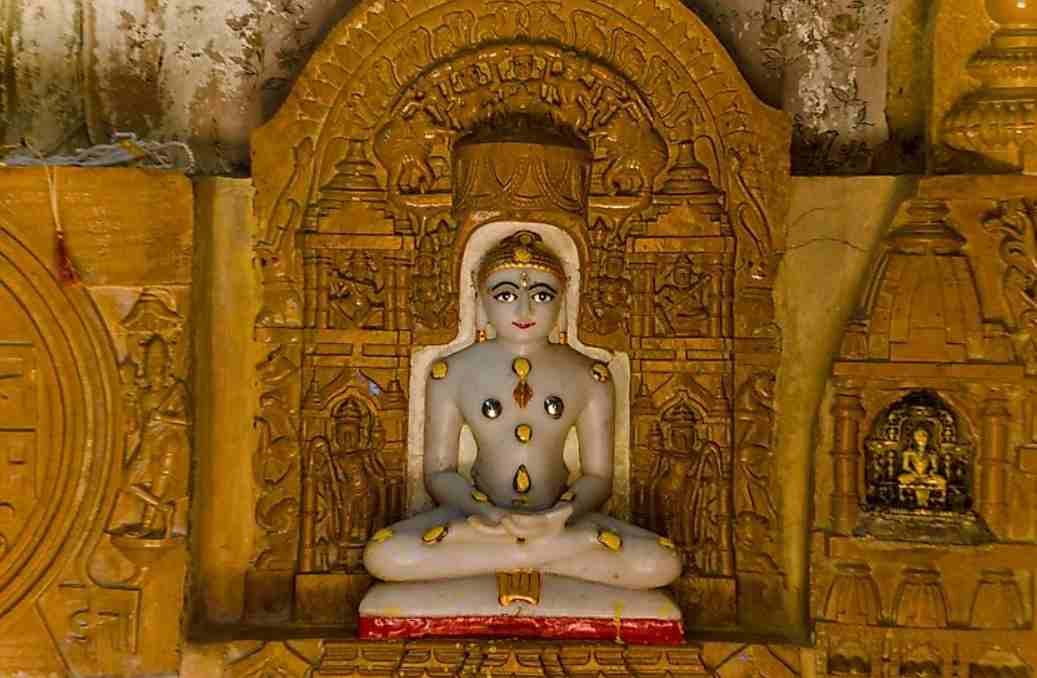
The name Jina, also written Jaina, means “conqueror.” According to Jain tradition, their faith dates back much further than Aryan Brahmanism.
Rishabha, Ajinath, and Aristanemi are mentioned in the Yajurveda.
One of the Puranas identifies Rishabha as an incarnation of Narayana.
The Main Aspects Of Jainism
- The Jain tradition has a line of teachers known as Tirthankaras.
- Jainism has 24 Tirthankaras.
- Rishabhanath is regarded as the first Tirthankara.
- Vardhaman Mahavira is thought to be the last Tirthankara.
- All Tirthankaras were allegedly Kshatriyas from birth.
Jainism's Central Doctrines
- The concept of a world creator is disregarded by Jainism, as is the validity of the Vedas.
- Jainism holds that people are good or wicked depending on their deeds, not because of where they were born.
- The Jains believe in karma and soul transmigration.
- Nirvana can be attained by living a pure life that is directed by the three-fold path of right faith, right knowledge, and right behaviour.
- The right to conduct entails not stealing, not possessing, ahimsa, not lying, and controlling one’s senses.
Principles of Jainism
- It primarily strives for emancipation, which can be attained without ritual.
- It can be accomplished by following three principles known as the Three Jewels or Triratna, i.e.
- Right Faith (Samyakdarshana),
- Right Action (Samyakjnana),
- Right Knowledge (Samyakcharita).
Councils of Jainism
The first Jain council was convened in the 3rd century BC at Pataliputra. Sthulabahu served as the chairman.
The second Jain council was held in 512 AD in Vallabhi, Gujarat. Devardhigani served as the chairman.
Jainism Groups
The split was primarily caused by hunger in Magadha, which prompted a party led by Bhadrabahu to flee to South India.
The group in South India maintained rigid traditions throughout the 12-year famine, whilst the group in Magadha adopted a more relaxed attitude and began donning white clothing.
When the Southern group returned to Magadha following the end of the famine and adopted the new customs, Jainism was split into two factions.
Jains are divided into two groups:
Digambaras (sky-clad) and Svetambaras (clothed in white).
Digambaras (sky-clad) | Svetambaras (clothed in white) |
Monks follow a strict nudity doctrine. Male monks do not dress, whilst female monks wear unstitched simple white sarees. Follow the five pledges (Satya, Ahimsa, Asteya, Aparigraha, and Brahmacharya). Believe that women cannot obtain liberation. Digambara claims that Tirthankara Mallinath is a male. Digambara believes Mahavira never wed. Bhadrabahu was a follower of this group. | Monks dress in white. Follow only four pledges (except brahmacharya). Believe in the liberty of women. Shwetambaras have accepted salvation. Shwetambar claims that Mallinath is a female. Shwetambaras believes Mahavira wed and gave birth to a daughter. Sthulabhadra was a follower of this group. |
When Did Jainism Emerge?
Jainism gained popularity when Lord Mahavira spread the religion in the sixth century B.C.
Lord Mahavira was the last of 24 Tirthankaras.
Rishabnatha was the first Tirthankara.
Mahavira established a group of his devotees that welcomed both men and women.
Jainism steadily grew in popularity in West and South India, where the Brahmanical order was weak because it didn’t distinguish itself from the Brahmanical religion in an obvious way.
The Kalinga King of Kharavela gave it his support in Odisha.
Chandragupta Maurya, the legendary Mauryan king, converted to Jainism and spread it over Karnataka in his later years.
Reason For Jainism's Emergence
During the Later Vedic period, elaborate sacrifices and ceremonies were encouraged, which were disliked among the common public.
It was also found that the sacrifice rituals were overly expensive.
Superstitious ideas and mantras puzzled the populace.
The Varna system separated society into four classes based on birth, with the two upper classes enjoying various advantages.
The Upanishads’ teachings, which were an alternative to the sacrificial system, were extremely philosophical in character and thus not easily grasped by many.
The Vaisyas’ economic situation improved as trade increased. They wanted to raise their social status as a result, but the conventional Varna system prohibited this. As a result, they began to back Jainism more.
Jain literature
Jain literature is divided into two main groups:
- Agam Literature: Lord Mahavir’s sermon was meticulously gathered into several manuscripts by his followers.
- Non-agam Literature: This is made up of scholarly writings by senior monks, nuns, and scholars that provide comments on and explanations of Agam literature and other independent works.





